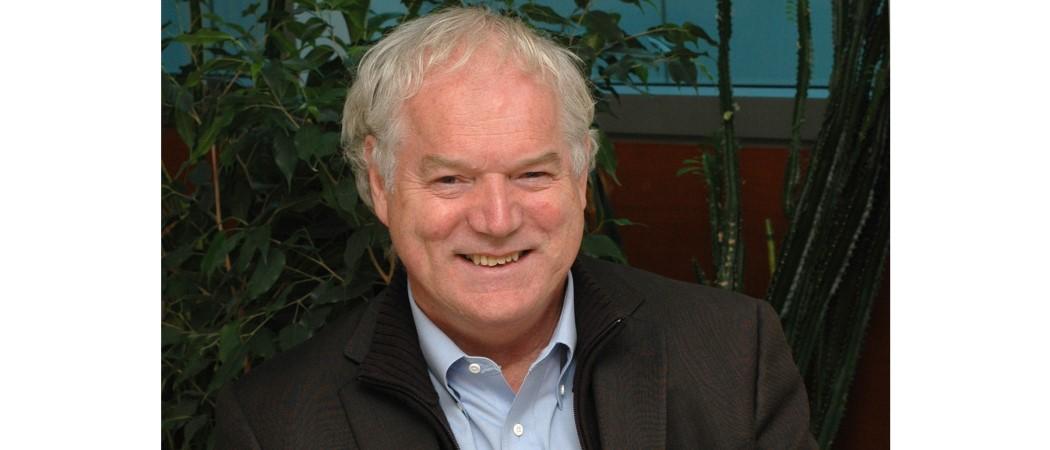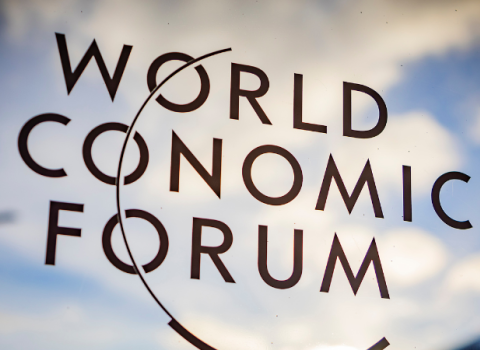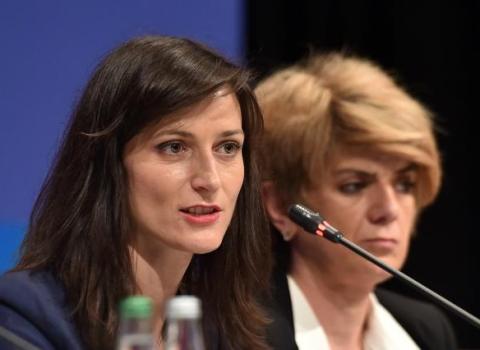To boost infectious disease research post-pandemic, Europe should emulate the Crick’s dual approach of running basic research in parallel with translating discoveries to treatments, says Nobel prize winner Michael Houghton

Michael Houghton, 2020 Nobel Prize in Physiology or Medicine and Li Ka Shing Professor of Virology, University of Alberta.
Learning the lessons of COVID-19, the EU should modernise its approach to biomedical science, creating its own version of the London-based Francis Crick Institute to carry out and translate infectious disease research, according to virologist and Nobel laureate Michael Houghton.
Houghton speaks with the authority of someone who has made a major contribution to helping control the silent epidemic of hepatitis C infection. He shared the 2020 Nobel Prize in Physiology or Medicine with Harvey Alter and Charles Rice for identifying and isolating hepatitis C virus in 1989.
As a result of the discovery, new diagnostics were developed for screening blood donations, and by 1992 the virus was virtually eliminated from the blood supply.
That led to a reduction of more than 80% in annual reported cases by 1996. According to the Nobel committee, the breakthrough “made possible blood tests and new medicines that have saved millions of lives.”
British-born Houghton, who is director of the Li Ka Shing Applied Virology Institute, at the University of Alberta, Canada, told Science|Business the EU should reflect on the lessons of COVID-19 and think carefully about its infectious diseases funding, to be prepared for future pandemics.
“I would recommend Europe to get a world class institute for infectious disease,” he said. “The Francis Crick in London is the model to aim for,” he said.
The traditional, hierarchical model of doing science, of the “the big lab with the big head”, is outmoded, Houghton said. The Crick, by contrast, “empowers world class young scientists. They’re not dependent on the big head, they’re freed. [Science] has to be run in this modern way,” he said.
A Crick-like institution in the EU should give scientists 10 years of funding, Houghton said. “You can’t have the young ones worrying about grant applications.”
The Crick, which opened in 2016 at a cost of £700 million, is the largest biomedical institute under a single roof in Europe, with 1,500 staff. It is run by a “big head”, Nobel prize-winner Paul Nurse, but the science is done by more than 100 different research groups, and the building is designed in such a way, with a large central atrium, breakout rooms and open spaces, as to encourage chance encounters amongst different disciplines, in disease areas including cancer, HIV, tuberculosis and neurodegenerative diseases.
The Crick is home to Worldwide Influenza Centre, one of six centres in the world responsible for analysing influenza viruses circulating in the human population. It monitors flu strains around the world to inform vaccine development, looking at both seasonal and potentially pandemic strains.
While Houghton believes European institutions like Berlin’s Humboldt Institute, the Pasteur Institute in Paris, and the European Molecular Biology Laboratory are “very strong,” he says that research translation is “not as good in Europe as in the US or the UK”.
The Crick’s mission is the bring together the best scientists to study the fundamental biology underlying human disease, but it also has a specialist in-house translation team, working with researchers from the start of projects, to help take their discoveries forward. The translation team provides expertise and funding and can connect Crick scientists with industry, clinicians, drug discovery experts, technology experts and investors.
Stockpile vaccines
Houghton conducted his Nobel-winning research at the California-based Chiron Corporation, now part of Swiss pharma company Novartis. He moved to the University of Alberta in 2010.
Alongside his work on hepatitis C, Houghton worked on developing a vaccine against the first SARS (severe acute respiratory syndrome) outbreak of 2002 - 2004. The epidemic petered out on its own, manufacturing was never scaled up, and - to his regret – none of the vaccine canadidate was stored.
Looking back, “It’s a sombre reflection. If we had stockpiled this vaccine, we would have prevented most of the seriousness of this pandemic. Several [scientific] papers show that the 2003 vaccine neutralises the COVID-19 virus,” he said.
The main lesson he urges the world to take out of this crisis is to have some vaccine doses ready to be pulled from a freezer. “Increase funding for infectious disease, double the budgets around the world. Each country has to make sure it has very good manufacturing facilities too,” Houghton said.
Houghton was awarded C$750,000 last year to develop a COVID-19 vaccine, but the effort has since been parked.
“I got a small grant from the Canadian government to target the receptor-binding domain of the viral spike protein and we were getting great results in animals,” he said. “Unfortunately, I wasn’t able to advance it further. We didn’t get the funds for manufacturing, so we had to put it on the shelf.” The research is available to anyone around the world who wants to take it further.
In the end, the Canadian government bet on a quicker solution. “They were looking for rapid technologies. Mine was classic, old-fashioned technology. Tried and tested, but it does take a bit longer to develop,” said Houghton.
The record breaking speed of development of COVID-19 vaccines has given Houghton new hope of seeing a vaccine against hepatitis C, which causes hundreds of thousands of deaths a year. In addition, some 70 million people worldwide live with a chronic infection of the virus, which can cause severe liver inflammation. His lab has developed a vaccine candidate, which is expected to enter clinical trials next year.
Houghton says the new technologies, such as messenger RNA, that have been translated through to approved COVID-19 vaccines, are, “the silver lining behind this dark cloud. Science has rescued us,” he said.
The scale of the pandemic in the western world “has been beyond our wildest imagination in terms of severity,” and Houghton was relieved to get his first dose of COVID-19 vaccine recently. “I thanked all the wonderful people who produced it,” he said.





 A unique international forum for public research organisations and companies to connect their external engagement with strategic interests around their R&D system.
A unique international forum for public research organisations and companies to connect their external engagement with strategic interests around their R&D system.